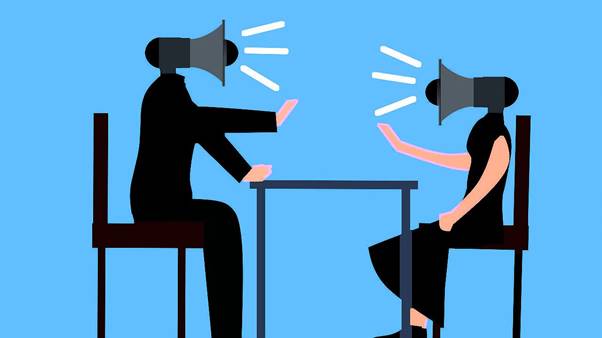.

The Most Misunderstood Words and How They’re Changing Communication
The Evolution of Language and Misunderstandings
Language is a living, breathing entity that evolves with society. Words can develop new meanings, shift in usage, or even fall out of favor entirely. As we navigate through an increasingly connected world, the nuances of language often lead to misunderstandings. Certain words that once had specific meanings are now frequently misinterpreted, leading to confusion in communication . This evolution can create barriers or bridges in understanding, depending on how we choose to navigate it.
The Impact of Technology on Communication
The rise of technology and social media has revolutionized the way we communicate , but it has also introduced a new layer of complexity. With platforms like Twitter, Instagram, and TikTok, brevity is key. This has led to the emergence of abbreviations, slang, and memes that are often misunderstood by those who are not part of a specific digital culture. For instance, the word "lit" has transitioned from describing something that is physically illuminated to meaning something exciting or excellent. This rapid shift can alienate those who are not familiar with contemporary vernacular, highlighting the importance of context in communication.
Commonly Misunderstood Words
Many words have taken on meanings that can lead to significant misunderstandings. Here are a few examples:
- Literally: Traditionally used to indicate something that is true in a strict sense, "literally" is now often used for emphasis, even when the statement isn’t factual. For example, someone might say, "I was literally dying of laughter." This usage can confuse listeners who expect a straightforward interpretation.
- Awesome: Originally used to describe something that inspires awe, "awesome" has become a catch-all term for anything that is considered good or impressive. This shift dilutes the original meaning and can lead people to overlook the true depth of something that is genuinely awe-inspiring.
- Sick: In its traditional sense, "sick" refers to illness. However, among younger generations, it has evolved to mean something cool or impressive. This duality can cause confusion, especially in mixed-age conversations.
- Bae: This term, which is often used as an affectionate term for a partner, can be misunderstood as an acronym for "Before Anyone Else." While many use it in a romantic context, its meaning can vary widely depending on the speaker’s intention and the relationship dynamics.
Cultural Context and Interpretation
Misunderstandings often arise from cultural differences. Words can carry various meanings and connotations depending on the cultural background of the speaker and the listener. For example, the word "family" may evoke a different set of associations for someone from a collectivist culture, where extended family plays a crucial role, compared to someone from an individualistic culture. Such differences can lead to miscommunication and conflict if not navigated carefully.
Understanding cultural context is essential for effective communication. It requires sensitivity to the backgrounds of others and a willingness to adapt one’s language. Misunderstandings can be avoided by asking clarifying questions or checking for understanding, fostering a more inclusive dialogue.
The Role of Tone and Delivery
Beyond words themselves, tone and delivery play a significant role in how messages are perceived. In written communication, for example, sarcasm can easily be misinterpreted without the visual cues that accompany spoken language. The phrase "Oh, great job!" might be taken at face value, while the speaker intended to convey sarcasm. This highlights the importance of being mindful of how we express ourselves, particularly in written formats like emails or social media posts, where tone can be easily lost.
Additionally, body language and facial expressions contribute to the meaning of words in face-to-face interactions. A slight change in posture or a smile can dramatically alter how a message is received. Misunderstandings can often be mitigated by paying attention to these non-verbal cues and ensuring that our delivery aligns with our intended message.
Embracing Change in Communication
As language continues to evolve, so too must our understanding of it. Embracing the changing nature of communication can enhance our interactions and foster greater connections. Rather than resisting new terms or usages, we can choose to learn and adapt, appreciating the creativity and dynamism of language.
Engaging with others in conversations about language can also promote understanding. Discussing the meanings and implications of commonly misunderstood words helps clarify intentions and reinforces the importance of context. By doing so, we can build a more inclusive communication environment, where everyone feels heard and understood.
Strategies for Effective Communication
To improve communication and reduce misunderstandings, consider the following strategies:
- Clarify and Confirm: If you are unsure about the meaning behind someone’s words, don’t hesitate to ask for clarification. Similarly, confirm that your message has been understood as intended.
- Be Mindful of Your Audience: Tailor your language to suit the people you are communicating with. Avoid jargon or slang that may not be familiar to everyone.
- Use Context Clues: Provide context when using words that might be ambiguous or easily misunderstood. This helps your audience grasp the intended meaning more quickly.
- Practice Active Listening: Focus on what others are saying without formulating your response while they speak. This allows for a better understanding of their message and fosters a more respectful dialogue.
Conclusion: The Future of Communication
As we move further into the digital age, the way we communicate will continue to evolve. Misunderstood words will likely persist, but by fostering open dialogue, embracing change, and being mindful of our language, we can minimize confusion and enhance our connections. Language is a powerful tool; when wielded thoughtfully, it can create understanding and unity amidst the chaos of interpretation and miscommunication. Let us navigate this ever-changing landscape with curiosity and respect for one another’s perspectives. - Words Trivia

